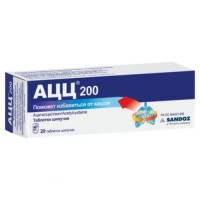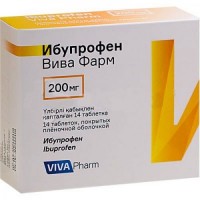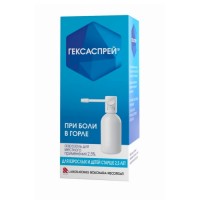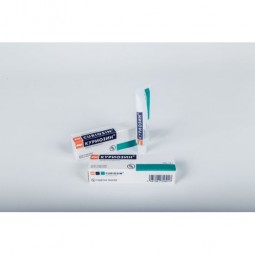The instruction for medical use of COLDFRI® medicine the Trade name of Koldfri® the International unlicensed name Is not present the Dosage form of the Tablet Structure One Day Tablet contains active agents: paracetamol of 500.0 mg of chlorpheniramine of a maleate of 2.0 mg of Phenylephrinum of a hydrochloride of 5.0 mg of caffeine (anhydrous) 15.0 mg excipients: starch corn, K-30 povidone, gelatin, magnesium stearate, quinolinic yellow E104, ferrous oxide yellow E172, diamond blue E133, methylparaben, propylparaben. One night tablet contains active agents: paracetamol of 500.0 mg of chlorpheniramine of a maleate of 4.0 mg of Phenylephrinum of a hydrochloride of 10.0 mg excipients: starch corn, K-30 povidone, gelatin, magnesium stearate, quinolinic yellow E104, ferrous oxide yellow E172, diamond blue E133, methylparaben, propylparaben. The description of the Tablet of round shape with a flat surface light yellow (day) and light green (night) colors, with risky on one party and an engraving of 'Medley' on other party. Pharmacotherapeutic group Analgetics-antipyretics others. Anilides. Paracetamol in a combination with other drugs. The ATX N02BE51 code the Pharmacological Pharmacokinetics Later properties of intake paracetamol is quickly absorbed from the digestive tract (DT), mainly in a small intestine. After single dose in a dose of 500 mg the maximum concentration in blood plasma (Cmax) is reached in 10-60 min. and makes about 6 mkg/ml, then gradually decreases and in 6 h makes 11-12 mkg/ml. Linking with blood proteins makes less than 10%. It is removed with urine mainly in the form of glyukuronidny and sulphatic conjugates. Caffeine is metabolized in a liver (97%) in 1 - 7-methylxanthine, 1.7 dimethylmethylxanthine and 1.3-dimethyl uric acid which are removed with urine. After intake Phenylephrinum is badly soaked up from a GIT. It is metabolized with the participation of MAO in a wall of intestines and at the first passing through a liver. Bioavailability of Phenylephrinum low. Chlorfeniramin well gets into different fabrics and through a blood-brain barrier. It is metabolized in a liver by methylation. It is removed in the form of metabolites and in not changed look by kidneys and the digestive tract (DT). The pharmacodynamics of Koldfri® the combined drug possesses analgeziruyushchy, febrifugal and antiallergic the actions caused by the active agents which are a part of drug. Paracetamol – non-steroidal anti-inflammatory drug, has febrifugal, analgetic and anti-inflammatory effect. Chlorpheniramine a maleate – antihistamine, the antagonist of H1-histamine receptors, has antiedematous effect. Phenylephrinum a hydrochloride – selection agonist ά1-адренорецепторов, has vasoconstrictive effect, promoting thereby elimination of congestion of a nose and reduction of discharges from a nose. Caffeine anhydride – the psychogogic means derivative of purine, increases intellectual and physical effeciency, reducing fatigue and drowsiness. Reduces the drowsiness caused by chlorpheniramine. Indications For elimination of congestion of a nose, discharges from a nose, sneezing, a headache, pains are obese also extremities, high temperature at: - catarrhal diseases - flu - acute rhinitis, sinusitis the Route of administration and doses the Adult: 1 light yellow tablet (Koldfri® day tablets) – in the morning and in the afternoon, 1 light green tablet (Koldfri® night tablets) – for the night. A pill is taken within 3 days, washing down with water, fruit juice or milk. It is not recommended to exceed the specified doses and to take Koldfri® a night pill during the day. Side effects - skin rash, an itching, a small tortoiseshell, a Quincke's disease - dizziness, backfilling disturbance, hyperexcitability - increase in arterial blood pressure, tachycardia - nausea, vomiting, epigastric pain, dryness in a mouth - an ischuria - accommodation paresis, increase in intraocular pressure, a mydriasis - anemia, thrombocytopenia, an agranulocytosis, hemolytic anemia, aplastic anemia, a methemoglobinemia, a pancytopenia - hepatotoxic action - nephrotoxicity (papillary necrosis) - a bronkhoobstruktion. - at prolonged use, especially in high doses, development of a methemoglobinemia, anemia, nephrotoxic and hepatotoxic action is possible. With care – the profound atherosclerosis of coronary arteries, arterial hypertension, a thyrotoxicosis, a pheochromocytoma, diabetes, bronchial asthma, a chronic obstructive pulmonary disease, deficit glyukozo-6-fosfatdegidrogenazy, blood diseases, congenital hyperbilirubinemias (Gilbert's syndromes, the Cudgel Johnson and the Rotor), a liver and/or renal failure, closed-angle glaucoma, a prostate hyperplasia. Contraindications - hypersensitivity to drug components - a concomitant use of tricyclic antidepressants, MAO inhibitors, beta blockers - a concomitant use of the drugs containing paracetamol - arterial hypertension - a hyperthyroidism - a prostatauxe - pregnancy and the period of a lactation - children's age up to 18 years Medicinal interactions Drug can enhance effects of MAO inhibitors (monoaminooxidase), tricyclic antidepressants, sedative drugs, ethanol and etanolsoderzhashchy drugs. Ethanol stimulates metabolism of paracetamol and raises its gepatoksichnost At simultaneous use of paracetamol with azidothymidine perhaps development of a neutropenia. At simultaneous use with chloramphenicol paracetamol increases its toxicity. The drugs stimulating activity of microsomal isoenzymes strengthen hepatotoxic action of paracetamol. Special instructions during treatment it is necessary to refrain from alcohol intake, sleeping and anxiolytic (tranquilizers) medicines. Not to accept together with other medicines containing paracetamol. If symptoms of a disease do not pass within 3 – 5 days, to see a doctor. The feature of influence of medicine on ability to run the vehicle or potentially dangerous mechanisms Should be careful during the performing of the work demanding concentration of attention, the increased speed of motor and mental reactions. Overdose Symptoms: dryness in a mouth, increase of pulse, arrhythmia, perspiration, nausea, vomiting, an abdominal pain, superactivity (overexcitation), hallucinations, an acute liver and/or renal failure. Treatment: gastric lavage, intravenous administration of Acetylcysteinum or methionine, symptomatic treatment. A form of release and packing On 6 tablets (day) and 3 tablets (night) in blister strip packaging from a film of the polyvinylchloride and printing aluminum foil varnished. On 1 blister strip packaging together with the instruction for medical use in the state and Russian languages place in a pack from cardboard. To Store storage conditions in the dry, protected from light place at a temperature not above 25 °C. To store out of children's reach! 4 years not to apply a period of storage after the expiry date specified on packing. Prescription status Without prescription the Name and the address of Medley Pharmasyyutikalz Limited producer, India Medley House, D2, MIDS Area, Andheri (East), Mumbai – 400,093 Owner of the registration certificate of Medley Pharmasyyutikalz Limited, India Medley House, D2, MIDS Area, Andheri (East), Mumbai – 400,093 Address of the organization accepting in the territory of the Republic of Kazakhstan claims from consumers on quality of products (goods) Representative office of Medley Pharmasyyutikalz Limited in RK acting through the authorized representative of Amit Shrivastava Almaty, Kurmangaza 48AE.mail St.: registration1@kazeuropharm.com Ph./fax: 261-51-41









